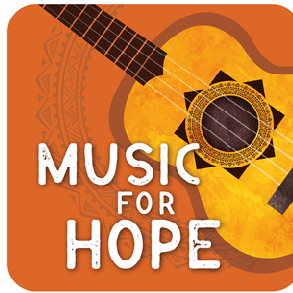Music For Hope: The Story So Far
A series of videos showing the origins and development of Music For HopeHere, the music teachers Eneyda, William, Pedro and Tony develop their discussion of the history of Music for Hope, giving more information about how and why Music for Hope was set up, the impact it had, particularly in developing a non-violent counterculture and necessary skills for music learning, socialization and friendship. We also see some of their teaching methodology and the engagement of the young people they teach (filmed and published in 2013).
In this video we learn more about the early years of Music for Hope, the methodology used by the teachers, how students grow and develop their talents within the project. The teachers also talk about the transformative nature of Music for Hope and, in particular, the crucial role it plays in violence prevention through the transmission of non-violent values and discipline (filmed and published in 2013).
In this video the music teachers talk more about the values that Music for Hope teaches and how it creates a safe, familial environment for the young people who participate. They contrast Music for Hope’s contribution with the violence and delinquency that was/is severely damaging El Salvador and its youth. We hear the first part of a young student’s story and the difficulties he faced as a young person. In this context the music teachers reflect on the impact Music for Hope has had on their own lives and others (filmed 2013, published 2015).
Here the young music student continues his story by talking about how Music for Hope helped him turn his life around, to leave behind drugs and delinquency, learn new skills and develop his talents. The music teachers reflect on similar stories from other students they have taught and mentored (filmed 2013, published 2015). They also speak about their own roles as mentors and complexity of young people’s lives in El Salvador, while also considering how Music for Hope helps young people transmit positive values to others (filmed 2013, published 2015).
.This video concludes the young student’s testimony. He talks about how he came to think and act in much more positive ways and the impact that had on his life within his family and the community. We see footage of the student performing and he talks about his subsequent achievements, even to the extent of song-writing. He goes on to outline his future hopes and goals. The music teachers also reflect on how students’ lives are changed by Music for Hope and how students go on to transmit the values and skills that they learn (filmed 2013, published 2015).
This video briefly recaps how Music for Hope was founded, then switches to an interview with the project coordinator, Sonia, who talks about the work that the project has done to that point, the positive impact it has had on young people’s lives, and the values and skills it has helped transmit and develop. We also see footage of music groups and individual student rehearsals from each of the four music schools linked to the project and how students go on to teach within the project. Sonia reflects on the extraordinary commitment of the teachers and thinks about the future, particularly within the context of the current ongoing national and regional insecurity, and we see an example of how they fundraise within their own communities.
This video is an edited walkabout (bikeabout) interview with one of Music for Hope’s music teachers Tony Centeno. In it he describes the difficulties faced by young students and the special measures he had to take to protect those coming to the Nueva Esperanza music school from neighbouring communities during the particularly difficult years of 2015-2016 as they had to run the gauntlet of not only gang cliques who wanted to recruit and / or harass them but also the security forces who viewed all young people as targets for repression. The interview was filmed while cycling to and from a neighbouring community as he picked up his students from their homes. He would also take them back after music rehearsals (filmed in 2016, published 2019).
This documentary film charts the process of making the first (two) charango(s) ever to be made in the Bajo Lempa – El Salvador. This was so that the young musicians of Music for Hope could have their own, better quality instruments to play as up to that point they’d been borrowing poor quality charangos from the local school. Este documental graba el proceso de hacer los primeros dos charangos que se haya hecho en el Bajo Lempa – El Salvador. Era para que los músicos jóvenes de Music for Hope pudiesen tener sus propios instrumentos y de mejor calidad de los que anteriormente prestaban de la escuela local.
